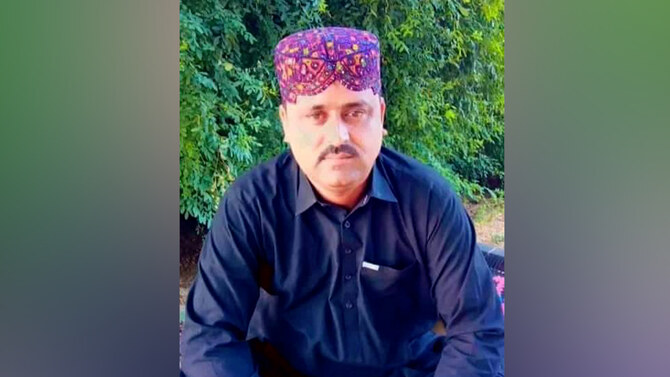KARACHI: A journalist was killed in an attack by suspected bandits operating in riverine areas of southern Pakistan, the provincial home ministry said on Tuesday, taking the total number of media workers killed this year in Sindh province to 11.
Muhammad Bachal Ghunio, associated with Awaz TV, was shot dead on Monday in the riverine areas surrounding Sindh’s Ghotki district. His family and locals suspect the involvement of riverine area bandits but police said the killing could be the result of “personal enmity.”
Last week, 12 policemen were killed when bandits attacked them with guns and rocket-propelled grenades in the Kacha area in Punjab’s Rahim Yar Khan district, which is known for hideouts along the Indus River where hundreds of heavily armed bandits evade police.
“The accused involved in the murder of journalist Muhammad Bachal Ghunio in an attack by dacoits in riverine areas should be brought to justice as soon as possible,” Sindh Home Minister Ziaul Hassan Lanjar said on Tuesday.
Bandits often rob people traveling on highways in Sindh, Punjab and elsewhere in the country. Some areas in the two provinces are so dangerous that people avoid traveling after sunset to avoid getting robbed, though police say they have cleared most “no-go areas.” Bandits also kidnap people for ransom in various parts of Pakistan.
Northern Sindh has become an increasingly dangerous region for journalists, with several killed and many falsely accused over the past few years.
The killing of Ghunio also comes a day after a local court rejected the bail plea of parliamentarian Khalid Lund and his sons Shahbaz Lund and Noor Muhammad Lund, suspects in the murder of another Ghotki journalist, Nasrullah Gadani, who was killed in May.
Pakistan is consistently ranked among the most dangerous countries for journalists, with many facing threats, intimidation, and violence. The government and military say they don’t persecute media workers.
According to the Committee to Protect Journalists (CPJ), 103 journalists and media workers were killed in Pakistan between 1992 and 2024. A report published by Freedom Network in June said 10 media workers were killed in Sindh this year, with Ghunio’s murder taking the total to 11.




















